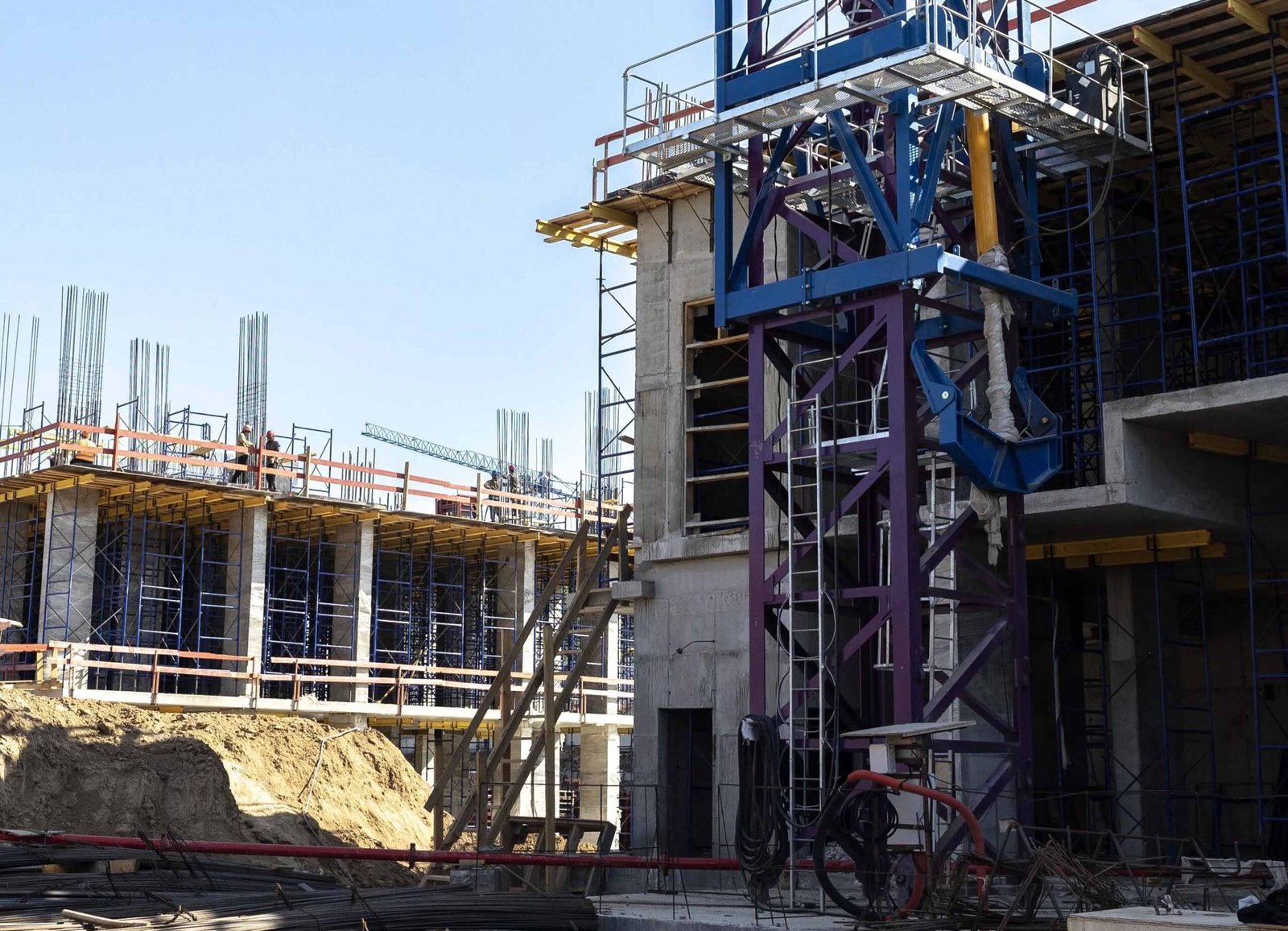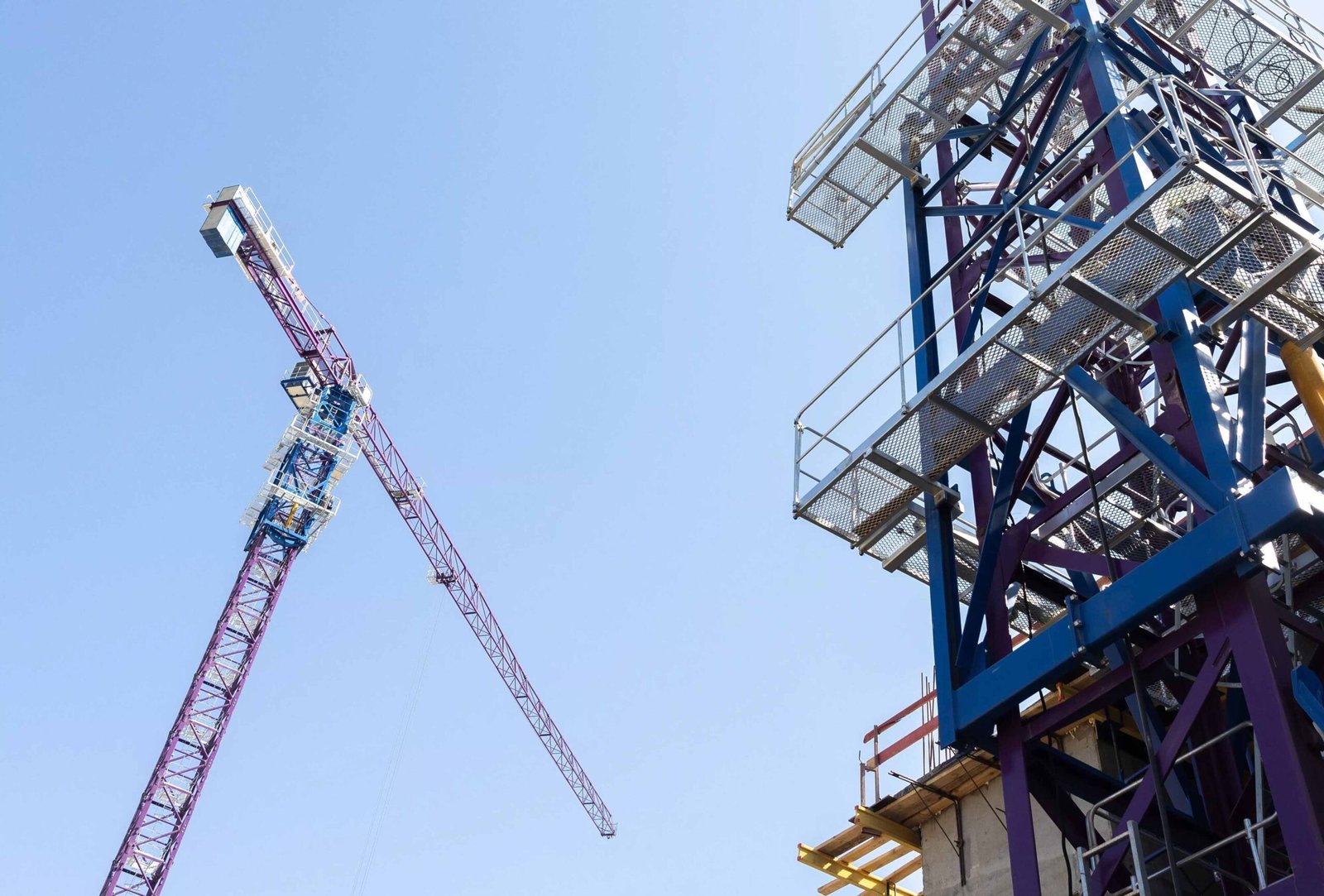
A tower crane is one of the most iconic machines used in large construction projects. These towering giants can be seen in cities around the world, helping to build skyscrapers, bridges, and other monumental structures. But what exactly is a tower crane, and how does it work? Let’s dive into the purpose of a tower crane, the differences between tower cranes and other types of cranes, and what makes them such an essential tool for construction.
Tower cranes are used for lifting heavy materials on construction sites, especially for tall buildings. They are known for their height and large lifting capacity.
In this article, we’ll explore the purpose, uses, and features of tower cranes, and what sets them apart from other crane types.
What is the purpose of a tower crane?

The primary purpose of a tower crane is to hoist materials to great heights on construction sites. These cranes are designed to lift and move heavy items such as steel beams, concrete slabs, and other large construction materials to where they are needed, often hundreds of feet in the air.
Tower cranes are essential for constructing high-rise buildings and other large structures where space on the ground is limited. Due to their height and ability to rotate 360 degrees, tower cranes can access a wide area from a single location. This helps reduce the need for moving the crane from one part of the site to another, making them highly efficient.
Key Functions of a Tower Crane
| Function | Description |
|---|---|
| Lifting Materials | Hoists heavy materials like steel beams and concrete slabs |
| Reaching Tall Heights | Designed for use in tall buildings where space is limited |
| Rotational Capability | Can rotate 360 degrees, offering a wide range of coverage |
These cranes are often used in projects that require large-scale lifting operations, such as the construction of skyscrapers, factories, and bridges.
What is the difference between a crane and a tower crane?

The main difference between a crane and a tower crane lies in their structure and functionality. Both are designed for lifting heavy loads, but tower cranes are specifically built for projects that involve significant height.
Here’s a comparison:
-
Design and Size:
- A crane can refer to a broad range of lifting machines, including mobile cranes1, truck-mounted cranes, and crawler cranes2. These cranes are versatile and can be moved easily across the construction site.
- A tower crane, on the other hand, has a fixed position and is tall, often reaching over 100 meters in height. Its height is adjustable and can be increased as the building progresses.
-
Mobility:
- Cranes like mobile or crawler cranes are highly mobile and can be transported to different locations on the site.
- Tower cranes are stationary and are usually constructed on-site, requiring a smaller crane to assemble them.
-
Lifting Capacity:
- Tower cranes typically have a higher lifting capacity compared to other cranes, enabling them to lift heavier loads to greater heights. For example, a tower crane can easily lift loads over 10 tons to several hundred meters.
- Other types of cranes may be more limited in terms of the height they can reach and the weight they can lift.
Crane vs Tower Crane Comparison
| Feature | General Crane | Tower Crane |
|---|---|---|
| Design | Varies in type, more flexible | Fixed, tall structure |
| Mobility | Highly mobile, can be moved around | Stationary, assembled on-site |
| Lifting Capacity | Lower capacity, suitable for smaller jobs | Higher capacity, suited for tall buildings |
| Height | Limited by reach of boom or track | Adjustable height, can reach over 100 meters |
Do tower cranes use hydraulics?

Yes, tower cranes do use hydraulics, but not in the same way as other cranes. While mobile cranes rely heavily on hydraulic systems for lifting and extending their booms, tower cranes typically use hydraulic jacks for two main purposes:
-
Raising the Crane’s Tower: As a building grows in height, the tower crane needs to be raised as well. Hydraulic jacks are used to extend the crane’s height by lifting the mast and adding additional sections to the tower.
-
Operating the Jib (Boom): Some tower cranes use hydraulic systems to control the movement of the crane's jib (the horizontal arm). The jib can move up and down and rotate, allowing the crane to position materials precisely.
However, most of the lifting in a tower crane is powered by electric motors that drive a winch system connected to cables. These winches lift heavy loads, with the hydraulic system primarily assisting in the structural adjustments.
Hydraulic Use in Tower Cranes
| Purpose | Description |
|---|---|
| Raising the Crane Tower | Hydraulic jacks raise the crane tower as the building height increases |
| Operating the Jib | Hydraulic systems control the movement of the jib (horizontal arm) |
What is the tower crane used to hoist?

Tower cranes are used to hoist a variety of heavy materials and equipment on construction sites. They are most commonly used to lift:
-
Building Materials: This includes steel beams, concrete slabs, bricks, and mortar. Tower cranes make it possible to move these materials to higher floors in a skyscraper or other tall structure.
-
Heavy Equipment: Tower cranes are also used to lift large equipment such as generators, air conditioning units, and other mechanical installations.
-
Construction Tools: Smaller tools, such as crane buckets3 (used for pouring concrete), are also lifted by tower cranes to assist with the construction process.
The crane's lifting hook and steel cables are used to hoist materials from the ground and lift them into position on the building. The crane’s slewing mechanism allows it to rotate 360 degrees, giving it the ability to place materials in any area of the building that needs them.
Common Tower Crane Hoisting Tasks
| Item | Description |
|---|---|
| Building Materials | Lifting steel beams, concrete slabs, bricks, etc. |
| Heavy Equipment | Hoisting generators, AC units, and large mechanical pieces |
| Construction Tools | Moving crane buckets and smaller tools to the work site |
Without tower cranes, construction projects for tall buildings would be much more challenging and time-consuming. Their ability to lift heavy materials efficiently and accurately is what makes them indispensable for modern-day construction.
Conclusion
A tower crane is a tall, fixed crane used to lift heavy materials to great heights, particularly in high-rise construction. Unlike other cranes, tower cranes are stationary, have high lifting capacities, and can reach significant heights. They use hydraulic systems for adjusting the crane's height and jib movement, but their main lifting power comes from electric winches. Tower cranes are essential for hoisting materials such as steel beams, concrete slabs, and large equipment to the upper floors of tall buildings.






